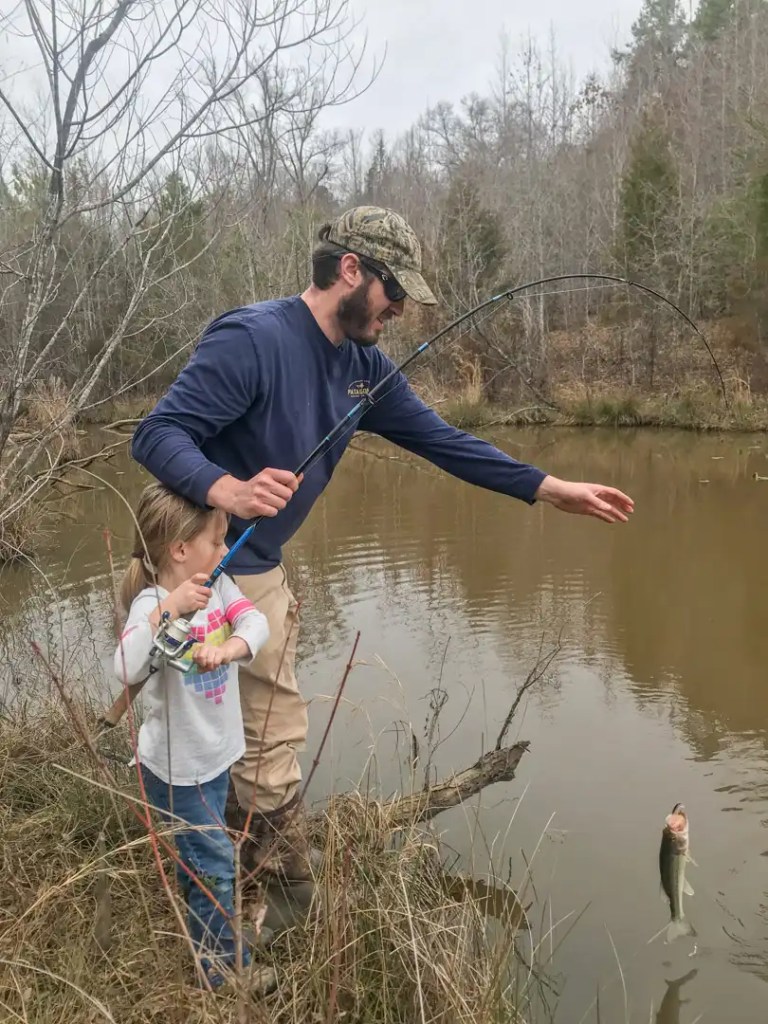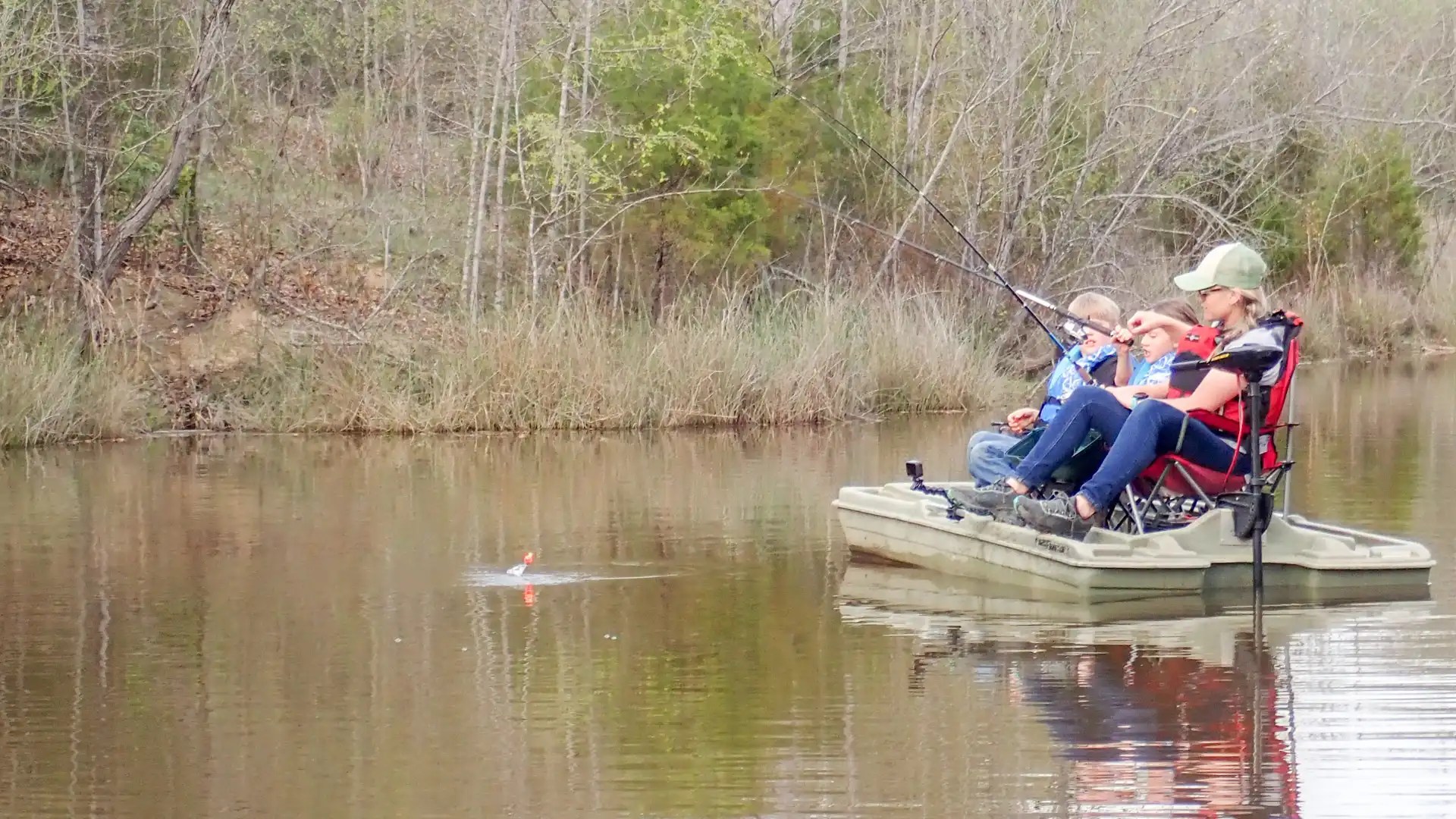
Parents have a way of making everything involving their kids difficult. Pond fishing is an easy, and easily accessible way for families to get outside and have fun wherever you live. These simple steps should prepare you for a great adventure.
Keep it simple
Use the simplest gear to catch fish. Bait Fishing with a bobber is about as simple as it comes. Cast to a spot that looks “fishy,” and wait for the bobber to start dancing. “Fishy” spots that are easy to find are docks, wooden bridges, and fallen trees. Also, check the area for any overhanging branches that will interfere with a cast, and set the kids loose.
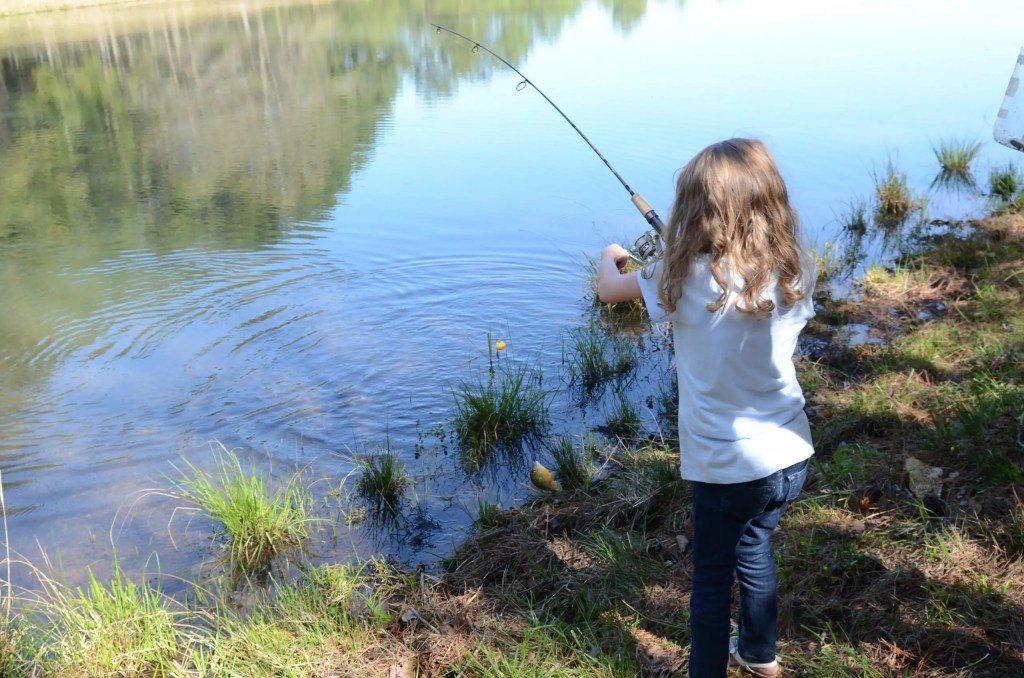
Practice first
Kids love anticipating activities. Practicing at home not only raises anticipation, but it prepares the child to make your life easier during the fishing excursion. Place a bucket and tie a bobber on the end of the line. Let the child practice hitting the bucket while casting. If they are competitive, give extra points for getting in the bucket.
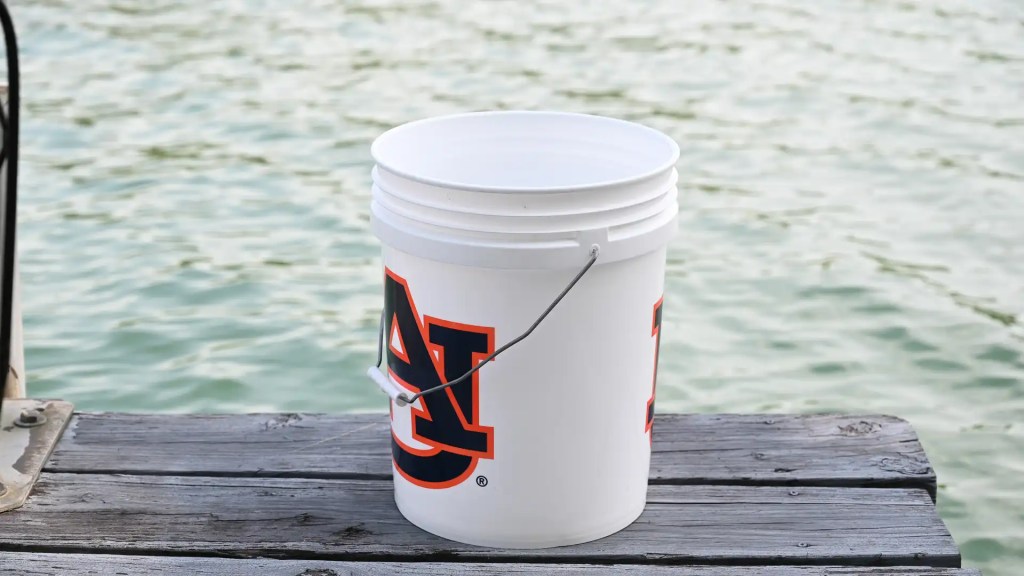
Rod and reel selection
Most parents and kids gravitate to the small spincast rods with cartoon characters. These are fun for the kids and are simple to use. Lil Angler Kid Casters are great because they do not have guides or exposed line to get tangled. If kids can get tangled on something, they will. The classic Zebco 33 or Lew’s Speed Cast combo are great for kids with a little experience that let them cast farther and really feel the fish fight.
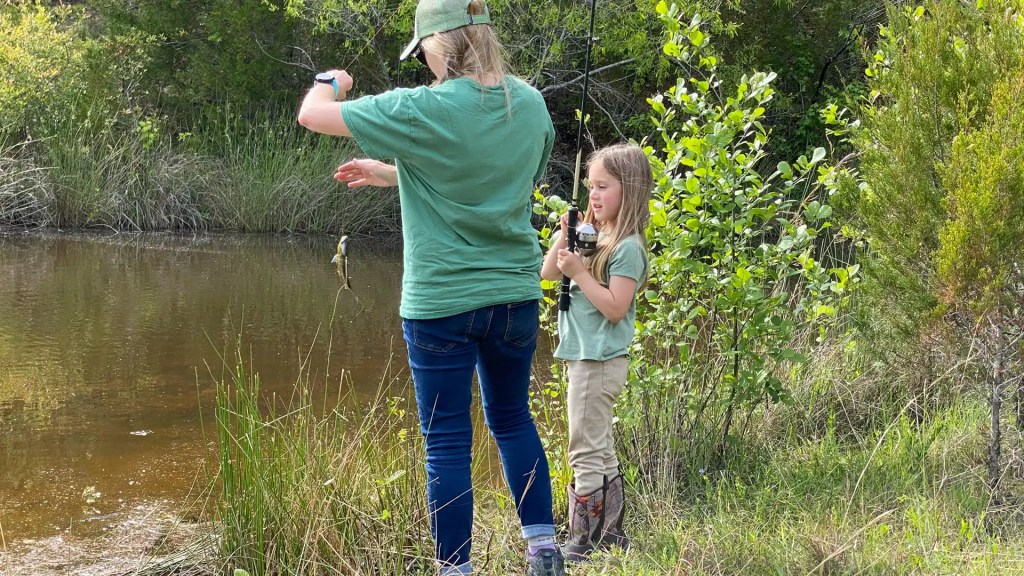
Bait bonanza
Finding bait involves going to a bait shop, sporting goods store, your flower bed, or your pantry. Anytime I see boys or girls walking to the neighborhood pond with dirt on their knees and a bucket full of worms it takes me back to my youth. Neighborhood panfish will also eat pantry items such as old bread or canned corn. The most irresistible bait for panfish is crickets, which can be found at a local bait shop or sporting goods store.
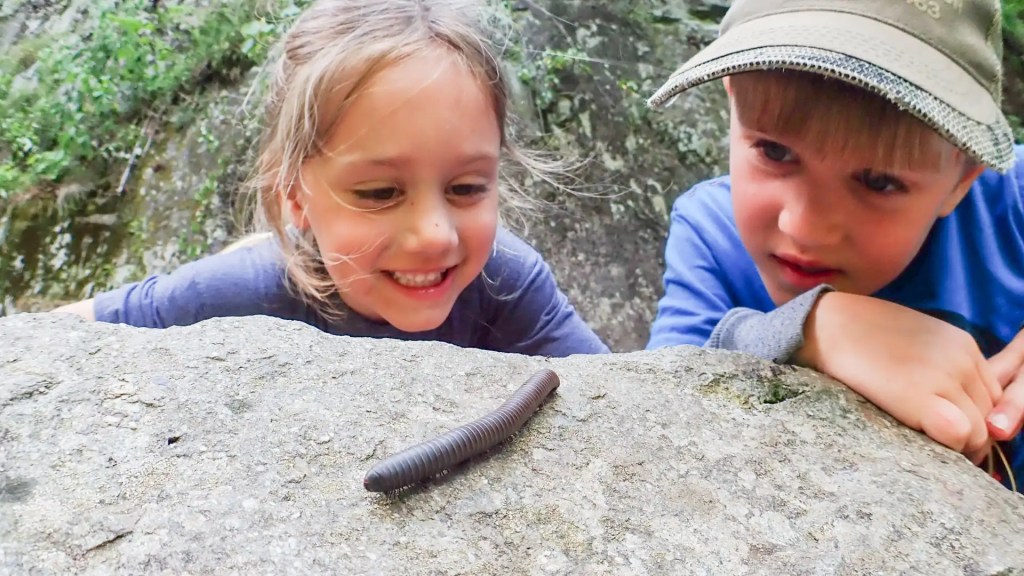
Quantity not quality
Walking to a pond, baiting a hook, and casting a line in the middle will probably not result in catching a fish quickly. When starting kids out fishing, it is prudent to start in a target-rich environment. Find a “fishy” spot (see tip #1) and keep changing spots until you find fish. Kids do not care whether the fish they catch is three inches or three feet long. They just like to catch fish.
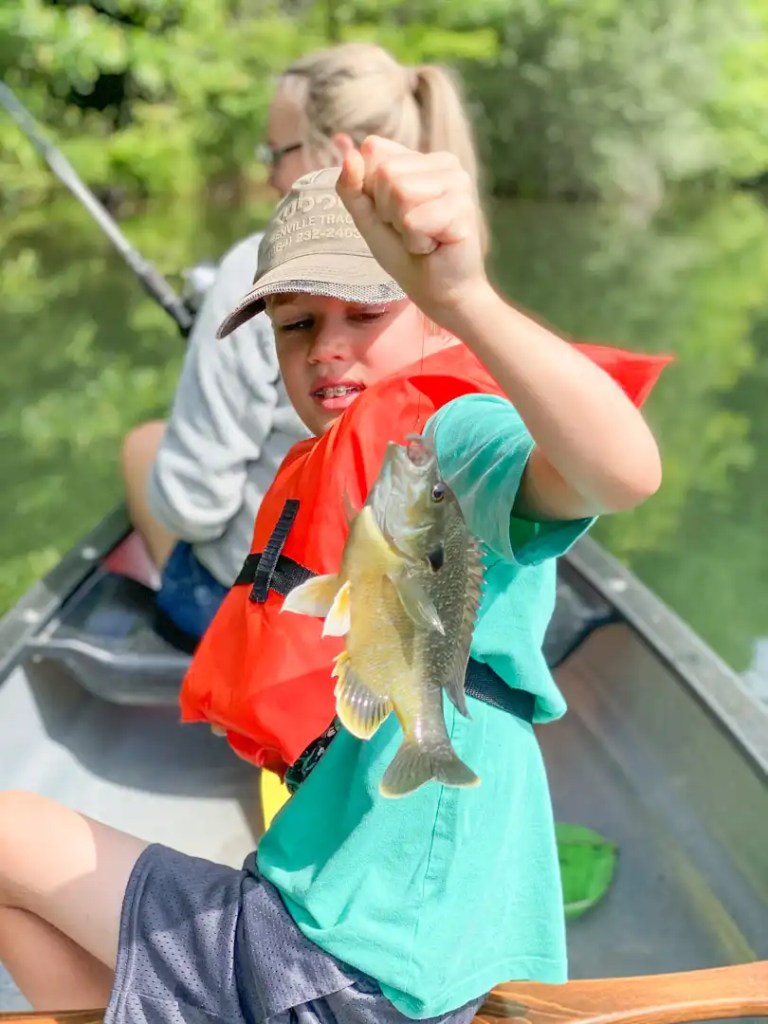
Don’t push it
If the fish are hard to find or not biting, it’s sometimes best to put fishing on the back burner and change the plan. Many fishing trips become casting competitions, rock skipping contests, or bug collecting trips when the fish are scarce. If you keep a kid engaged outside, they will have fun and want to go back. If you berate a kid for talking, moving, and, well, being a kid, the indoors may look better than the outdoors to them.
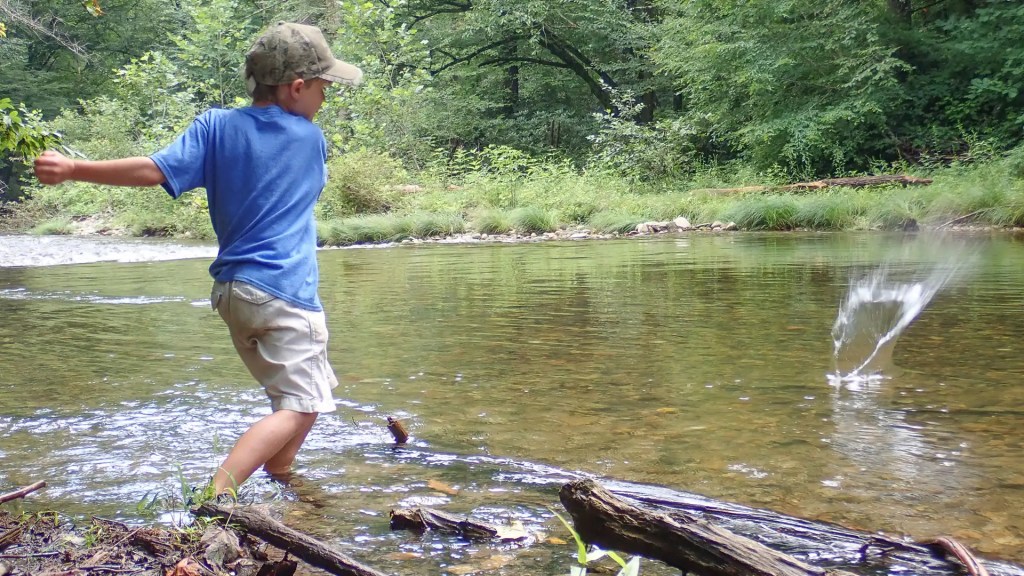
Bring snacks
Snacks can save a trip whether you are five or 55. Sitting in the sun without a drink or something to munch on will make anyone irritable. Bringing a water bottle and some gummies can be the difference between a 10-minute trip and an hour trip. If you teach a kid to crack peanuts or eat sunflower seeds, they will entertain themselves when the fishing is slow. They will also have the energy to reel fish in if the fishing gets hot.
